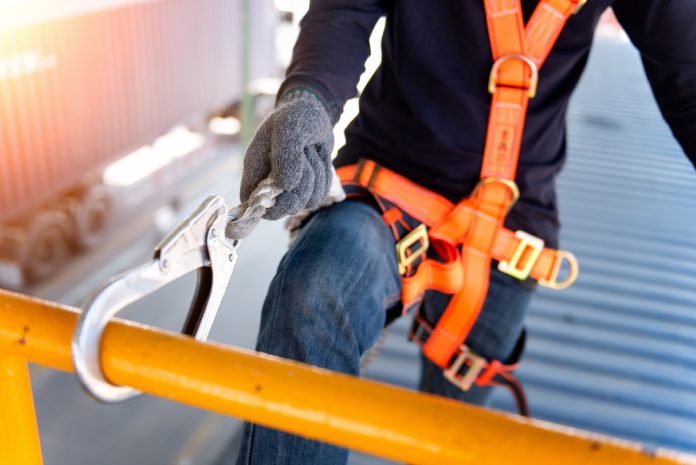Now that a large part of the world starts easing its long pandemic lockdown and many workers return to their jobs, it is good to keep in mind that there are more dangers beyond the virus. Especially in sectors such as construction, which are prone to more accidents because of the type of work carried out. Fortunately, technology and innovation are helping to create safer workspaces, as we mentioned in a previous article about wearables in construction. One of the latest examples of this trend is the technology project led by the University of Nevada that, by making use of several vibrating motors, alerts workers to the proximity of dangerous machinery. The team of researchers has leveraged the potential of “sensory substitution,” which allows transforming stimuli. In this case, the vision of an object is replaced by a tactile sensation.
With its belt shape, this innovative wearable can alert of surrounding machinery with a 360-degree precision. The ten motors are distributed around the belt, providing different levels of intensity depending on the proximity of the potential hazard. Two of the motors also feature specific vibration codes to indicate the type of machinery in the surroundings. Together with its vibrational feedback, the belt features a Bluetooth device that carries out the detection of hazardous machinery. This covers cranes and oncoming lorries, among other construction equipment
While it is still in a prototype stage, the researchers of the American university have achieved a 95 percent detection accuracy in their lab tests with blindfolded volunteers. Alert systems had so far focused on acoustic signals, but these frequently go unnoticed, especially in noisy environments like a construction site. The new device can thus improve the efficiency of the alerts substantially. Also, being light and portable, these wearables do not hinder the execution of daily tasks.
The smart belt is known as an Embedded Safety Communication System. While it is still too early to talk about retail price, the developers believe that it Will be in the 50 $ range.
Other on-site protection technologies
Currently, the main lines of research for the protection of workers in dangerous environments include the following technologies:
- Exoskeletons to reduce the risk of injuries when carrying heavyweights.
- Tracking devices, such as smart boots, to detect the location of an injured worker.
- Virtual and augmented reality headsets to train workers in the prevention of accidents as well as managing tasks in the construction site.
- On-site sensors that detect the presence of hazardous substances such as gases or asbestos.
- Inspection drones that relieve workers from the need to access dangerous areas.
Of course, caution and the use of all safety equipment available, from the time-honored helmet to a safety harness, are still the best strategy to avoid accidents and injuries.
Source: Construction Dive






